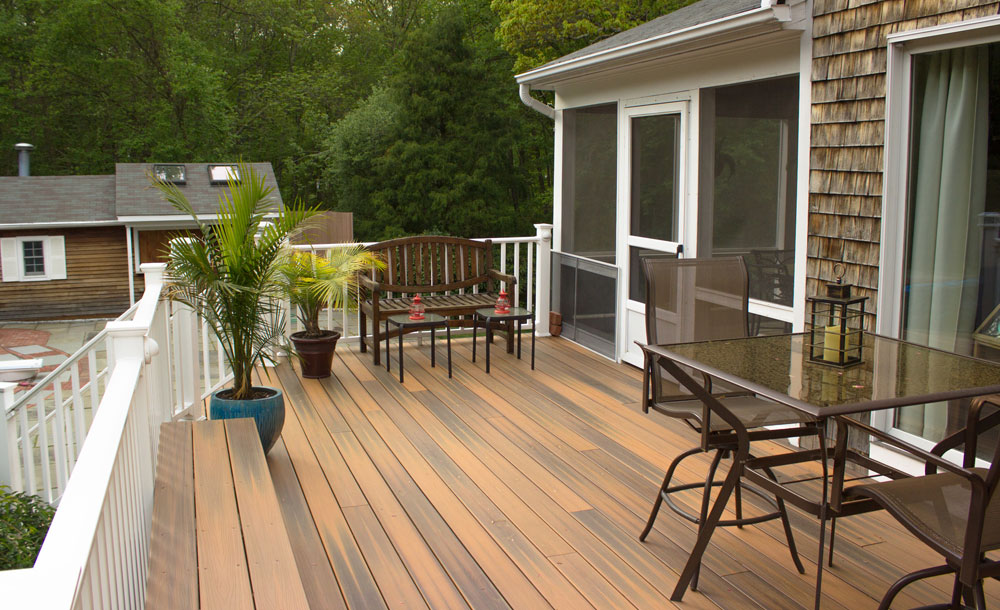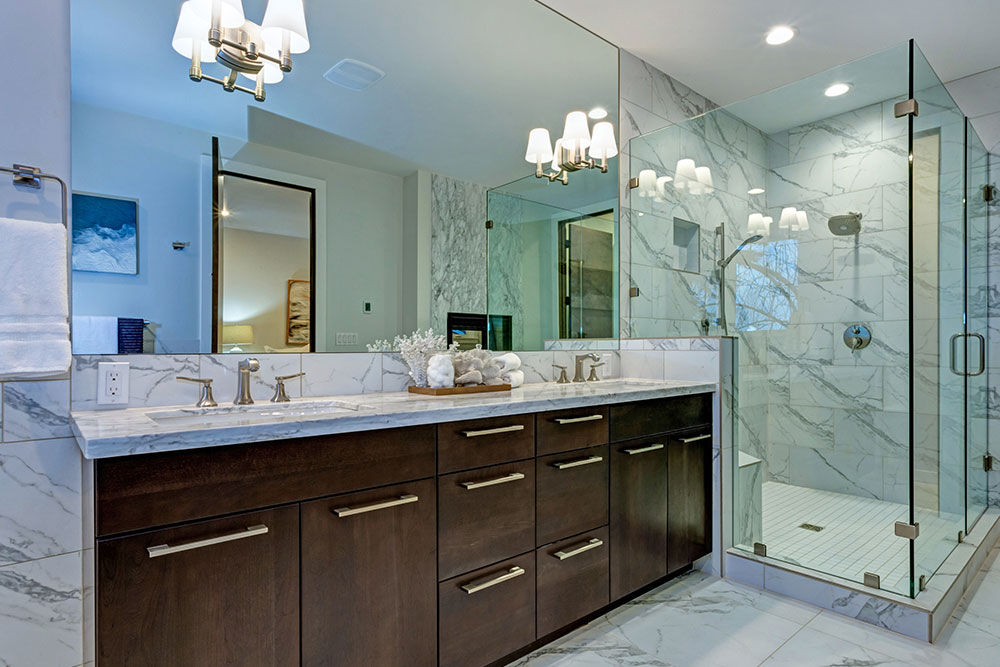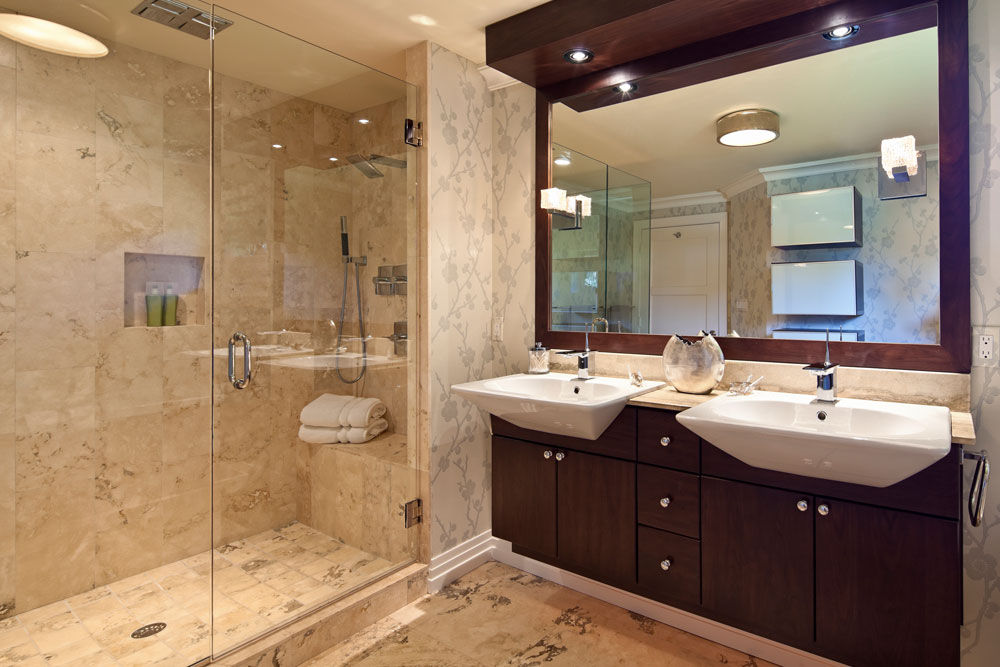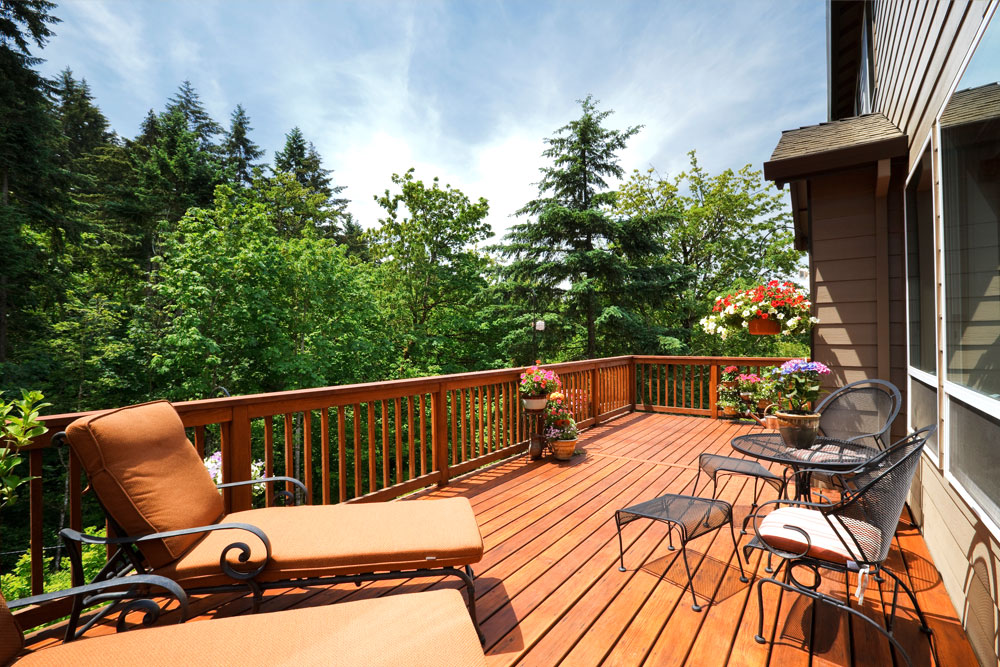The original and still most common decking option, wood is natural, strong, easy to install and feels good under bare feet. But it also requires an annual cleaning and can rot, splinter, and warp. Even though all wood naturally weathers to a gray color, it should be cleaned and re-stained every two to three years to keep it looking its best.
Pressure Treated Wood
Lasting about 15 years, this is the least expensive type of decking. Most pressure-treated wood is made from Southern yellow pine, which is quick to splinter if not maintained. When working with this wood, always use gloves, wear a mask, and never burn it because the toxic chemicals in the wood that prevent rot and termites can also be harmful to your health. These chemicals are also highly corrosive so for best results, use only stainless steel fasteners.
Tropical Hardwoods
Extremely dense and highly durable, these patio decking materials are rich in color and resistant to insects and decay and last about 25 years. But they are also expensive, heavy, and hard to work with — so hard in fact that you can’t hammer a nail without drilling a hole first. Avoid dark woods if your deck sees a lot of sun during the day because they will heat up like a frying pan.
Redwood and Cedar
A step up from pressure-treated wood—and costing about three times more—are cedar and redwood. These woods contain natural defenses against rot and insects, and should last around 20 years, but they are soft and easily damaged by foot traffic. Red cedar and redwood are both lightweight and stiff. Lighter-colored Port Orford Cedar is the hardest and most wear-resistant cedar.
Cedar is from the same genus as redwood, so the two have similar properties, but the former is less dense and can flex more without breaking. It also has less natural oil, which makes it easier to stain. Cedar forests are more abundant than redwood forests, making cedar the eco-friendlier and less expensive option.
In the past, redwood was more prized for its rich, red-brown coloring. It’s also the most fire-resistant wood on the market. However, excessive logging has made redwood less available, and what’s on the market today comes from new-growth trees, which aren’t as strong as the old-growth ones that built up redwood’s reputation. Redwood is mostly offered on the West Coast, from where it’s sourced.
Both cedar and redwood need to be power-washed, sanded, and refinished every three years or so. The material can last decades, but like all woods, the sun soon fades their natural color to gray; a sun-blocking stain is required to keep the color sharp. A water-repellent wood preservative can help prevent fine splits from occurring.
Composite Decking Material
Composites are made to look like real wood and come in a wide variety of natural-looking hues and grain patterns. Made by combining a blend of plastic and waste wood fibers, these boards won’t splinter and don’t need to be stained or painted, thanks to a built-in UV resistance.
Composites are more expensive and heavier than most woods and must be scrubbed regularly to prevent mildew, but if you factor in the maintenance costs for a wood deck, the amount you end up spending may turn out to be comparable.
Composites aren’t as stiff as wood, and they move more in response to changes in temperature. Be sure to follow the manufacturer’s installation instructions to the letter. When screwing through the face, use the special fasteners designed to prevent bumps from erupting around screw heads.
Plastic Decking Material
PVC (polyvinylchloride) have made great strides into the decking industry during the past decade. The materials were once considered fake looking, but the companies that manufacturer these products have been able to replicate the look of wood without all the required maintenance.
Plastic decking, which is 100 percent recyclable such as Azek, looks like wood. But plastic decking has its problems. It might expand and contract in certain climates, loosening joints and making decks unstable.
In hot, sunny areas, plastic decks can get very hot on the soles of the feet and actually radiate heat, making them uncomfortable. Still, for a virtually maintenance-free deck, plastic decking may be the answer.
Composite decking material uses a combination of plastic and wood fibers. The newer technologies come in a multitude of colors, grain patterns and thicknesses. Premium products like Trex and TimberTech have the color all the way through the boards instead of just a coating, so scratches are hidden, the boards will not stain or fade, and they have excellent mold resistance.



